If you’re looking for an easy-to-grow herb with many uses, look no further than Borage. This hardy annual is a beautiful addition to the garden with its bright blue flowers and is helpful in the kitchen and medicinally. Borage is sometimes called a starflower due to the shape of its blooms.
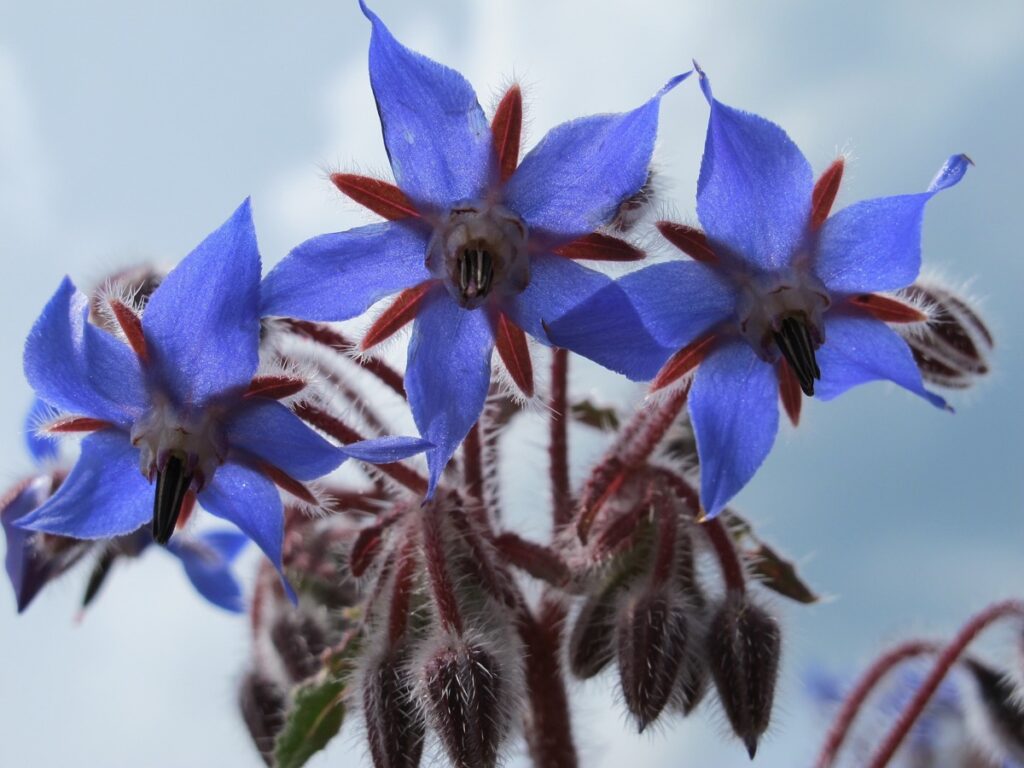
Borage is also a self-seeding plant, so once it is established in your garden, it will come back year after year with minimal effort. Borage, also known as starflower, is a beautiful annual herb with edible blue or purple flowers. The leaves and stems of Borage are also edible and have a cucumber-like flavor. Borage is easy to grow from seed and can be started indoors or outdoors.
How to grow borage from seed
How much time does Borage take to grow from seed?
- Borage seed propagation is easy and can be done by beginners with almost no experience. Borage is one of the easiest herbs to grow from seed. You can sow Borage seeds directly in the ground or start them indoors. If you start Borage seeds indoors, they should be sown about six weeks before the last frost date. Borage seeds germinate quickly, so you should see seedlings within ten days of planting.
- Borage is an easy-to-grow, blue flowering herb that can greatly impact taste and color in cooking. Borage takes about eight weeks to mature, so you’ll have plenty of time as long as it’s not the first frost. Remember that it will go to seed quickly if the weather is hot.
Harvesting of Borage
- When Borage is mature, harvest leaves and flowers as needed. Drying the plant’s leaves may not be a good idea, so use them fresh. Pick the flowers before their petals fully open, and when harvesting, remove them from the plant using your fingers or scissors.
- Borage is an annual herb that grows well in full sun and well-drained soil. It’s a fast-growing plant, so you’ll need to harvest the leaves regularly. To harvest Borage, cut the stems about 2 inches above the ground. You can use the leaves fresh or dry them for later use.
In case you missed it: Growing Borage In Pots – Containers At Home

Pruning overgrown Borage
- Borage is a fast-growing plant that doesn’t require much care. Borage is also a cut-and-come-again plant, meaning you can harvest the leaves and flowers multiple times throughout the growing season.
- Borage is a perennial plant, which means it grows back every year. Cut back your Borage plants to half their original size in midsummer to encourage them to bloom again later. Blossom clusters are a beautiful but short-lived cut flower or edible garnish.
- If you want more Borage, pinch the plant’s terminal growth to slow its rise and promote bushier leaves. You can pinch Borage when the plant has reached 6-8 inches in height. The plant self-sows readily, so don’t be surprised if you see it growing in other places outside your garden.
Best time to plant Borage seeds
- Plant Borago seeds in the spring (April/May) or any time, as long as the ground isn’t frozen or waterlogged.
- If you’re hoping to grow Borage from seed, you’ll need to plant the seeds in early spring. Borage is a hardy annual, which means it can withstand cold temperatures and grow well in most climates. However, if you live very cold winter area, it’s best to start your Borage seeds indoors, so they can germinate before being exposed to the cold.
Why is my Borage falling over?
- Borage grows best in sunlight but can also be grown in partial shade. The less light it gets, the weaker it will grow and the more likely it is to fall over. However, Borage will produce fewer flowers if left in partial shade.
- If your Borage plant is falling over, it is due to one of two reasons. The first reason could be that the plant is top-heavy. You can stake the plant to fix this problem so it has something to lean on. The second reason could be that the plant is not getting enough water. Make sure to water your Borage plant regularly and deeply to avoid this problem.
In case you missed it: How to Grow Marjoram from Seed: A Detailed Guide for Planting to Harvest
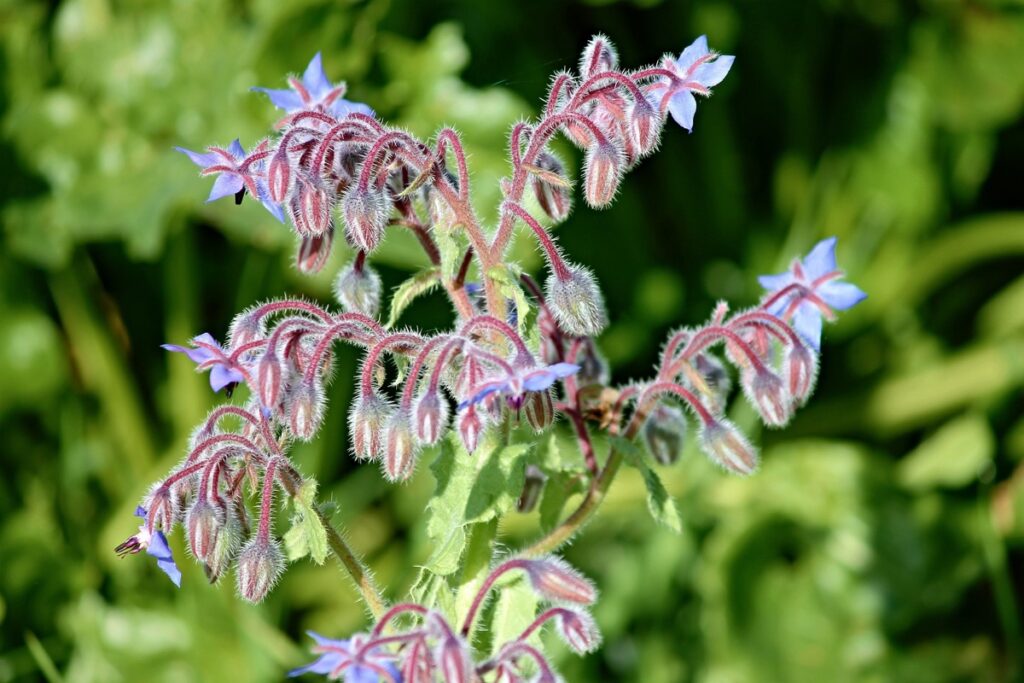
Water requirement for growing Borage
- Water Borage regularly to help it grow and thrive. They need plenty of water to help them be the best plants. Water your Borage every time the top 1 to 2 inches of potting media feels dry.
- Borage does like lots of water, especially when it is first getting started. Once it is established, it can tolerate some drought. Be sure to give your Borage plants plenty of water during the hot summer.
- Watering Borage is critical to its success. The watering frequency will depend on the amount of rainfall in your area and the temperature and humidity levels. If it rains frequently, you may only need water every other day. The key is to keep the soil moist but not soggy.
Does Borage improve the soil?
If you use Borage as green manure, deep taproots penetrate deep into the soil and bring nutrients to the top layers of the ground. When Borage is tilled back into the soil, it helps produce healthier soil with a rich balance of nutrients and aerated earth.
Growing Borage in pot
- Borage has a long taproot, so plant it in a container at least 8 inches deep. Growing Borage outside is also an option, as plants grow large. It’s recommended to give the plant its container.
- One of the great things about Borage is that it can be quickly grown in pots, making it a perfect plant for small spaces. First, fill a pot with well-draining soil and sow your Borage seeds. Once the seedlings emerge, thin them out so that there is only one plant per pot.
- Water your plants regularly, letting the soil dry out between waterings. When the weather gets hot, you may need to water more frequently to prevent the plants from wilting.
- During the growing season, fertilize your Borage plants every few weeks with a general-purpose fertilizer. Once the flowers start to appear, you can stop fertilizing. To harvest your Borage, cut the stems just above where they branch off from the main stem.
In case you missed it: How to Grow Sundews at Home: Soil, Propagation, Planting, and Care
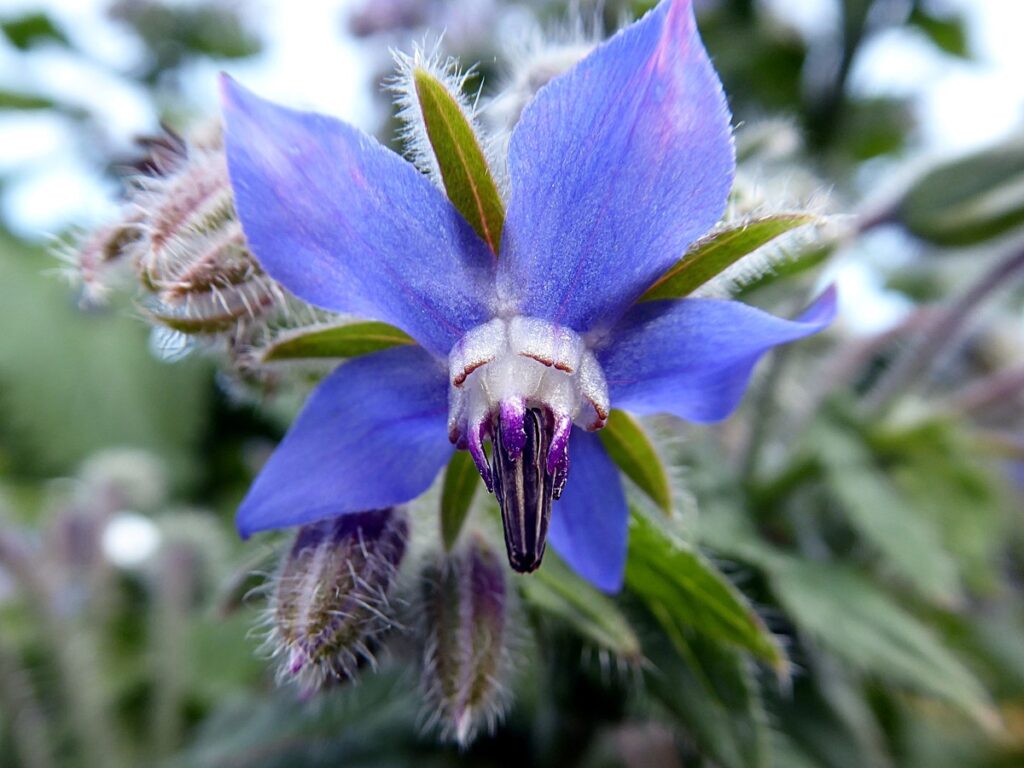
Will Borage reseed itself?
Borage is an annual herb that will reseed itself in your garden if you let it. The plant produces small, blue flowers popular with bees and other pollinators. Borage is easy to grow from seed and does not require much care once it is established. If your area has a long growing season, sow Borage seeds directly in the ground. Otherwise, start seeds indoors.
Germination of Borage seeds indoors
- It’s easy to start Borage seeds indoors. You should find a spot that receives sunlight, ensure it stays moist, and come up with a watering schedule. You can start Borage seeds indoors in early spring.
- Borage can be an excellent addition to any garden; the seeds are small enough to sow right in your garden.
- Borage should be planted at a depth of 1/4- to 1/2-inch. To plant seeds every 12 inches, you can either poke a hole and drop the seed in or take the easy route and sprinkle them evenly over the soil before pressing it down lightly. To start indoors, sow one or two Borage seeds per seed cell and cover them with dirt before lightly patting them down.
- Borage is a small, rich green herb that prefers to grow in dry and sunny places. It does well when grown from seed but can take some time. To help you extend the harvest, plant three times at 4-week intervals to have Borage ready for those last-minute events. The distance between rows should be 18 inches, and the spacing between plants should be 12 inches.
Sun requirement for growing Borage
- Your Borage plants or seeds will grow better if you plant them in a full-sun location or with at least six to eight hours of bright morning light each day. Planting them near a large window where they’ll receive plenty of light will help give your plants the best start.
- Borage is a sun-loving plant, so it’s best to sow the seeds in full sun. However, Borage will tolerate some shade, so if your garden doesn’t get full sun, you can still grow this pretty herb. Just be sure to give it enough space to sprawl, as Borage can get up to 3 feet wide.
In case you missed it: How to Grow Pansies from Seed: Care, Planting to Harvest
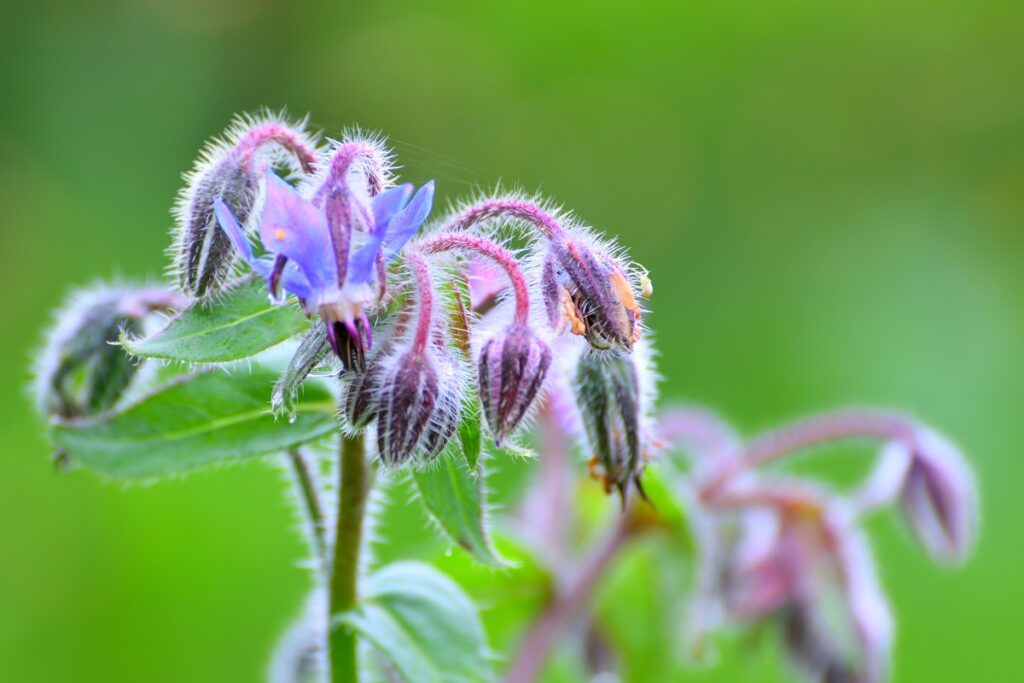
How deep do you plant Borage seeds?
Borage seeds should be planted about 1/4 inch deep in the soil. You can plant them closer together if you want, but they will need to be thinned out later on. Borage seeds germinate best at a temperature of 21°C.
Soil requirement for growing Borage
- Borage plants prefer well-drained soil but can be grown in just about any soil condition. This plant will thrive in dry, nutrient-poor soil if given adequate water. Borage won’t mind moderately moist soil, either. This plant prefers a slightly acidic pH range of 4.5 to 8.5. Borage also grows easily in poor soil. It can grow 3 feet tall and 2 feet wide in warmer climates, giving them room to grow.
- Borage is an annual herb that grows well in most soils but prefers rich, well-drained soil. To ensure your Borage has the nutrients it needs to grow well, incorporate compost or aged manure into the soil before planting. Borage does not like to compete with other plants for nutrients, so make sure you plant it in an area of your garden where it will have plenty of room to grow.
Is Borage a trap crop?
- This crop is also a trap for aphids. The Borage plant possesses the unique quality of attracting aphids. If you are having problems with these pesky pests, the Borage plant can be a great trap crop.
- Some gardeners consider Borage a trap crop because it can attract bees and pollinators away from other plants in the garden. However, Borage is an essential nectar source for bees and other pollinators, so having this plant in your garden is beneficial. If you’re concerned about attracting too many pollinators, you can plant Borage in a different garden area from your other plants.
The best fertilizer for growing Borage
- When the growing season starts, fertilize every 4 to 6 weeks. Borage is a self-seeding annual, so it doesn’t need fertilizer to keep coming back year after year. Too much fertilizer can hinder Borage’s growth. To boost your Borage, add some compost to the soil before planting.
- To grow Borage from seed, you must fertilize your plants. Borage is a heavy feeder and will need frequent fertilization to produce a bountiful crop. Every two weeks, you should fertilize with a water-soluble fertilizer like 20-20-20. Follow the manufacturer’s instructions on how much fertilizer to use.
Why is my Borage leggy?
- Borage is a plant that will get leggy and stop growing if the soil is too rich. Its expected height is 24 inches, with a 12-inch width.
- If your Borage plant is leggy, it’s likely due to a lack of sunlight. If your plant isn’t getting enough sun, it will stretch out in search of light, resulting in leggy growth. Move your plant to a sunnier spot. Trim back the leggy growth to encourage bushier growth. Give your plant a dose of liquid fertilizer formulated for plants that lack sunlight.
Best Borage companion plants
- Borage is a popular flowering herb loved by one of the most important pollinators: bees. It’s also a helpful companion plant for Tomatoes, Cabbage, Strawberries, and Squash, reducing damage from tomato hornworms and cabbage worms.
- Borage can be planted with herbs such as Basil, Oregano, and Thyme. It also grows with vegetables such as Tomatoes, Peppers, and Eggplant.
Is Borage fast-growing?
Yes, Borage is a fast-growing annual herb and can reach 2 feet in height. This herbaceous plant has large, hairy leaves and produces blue or white star-shaped flowers. Borage thrives in full sun and well-drained soil. To grow Borage from seed, sow the seeds in spring after the last frost date. Thin the seedlings when they are 4 inches tall. When transplanting Borage to the garden, space the plants 12 to 18 inches apart.
In case you missed it: Easy to Grow Orchid Plants for Beginners: Soil, Propagation, Planting, and Care
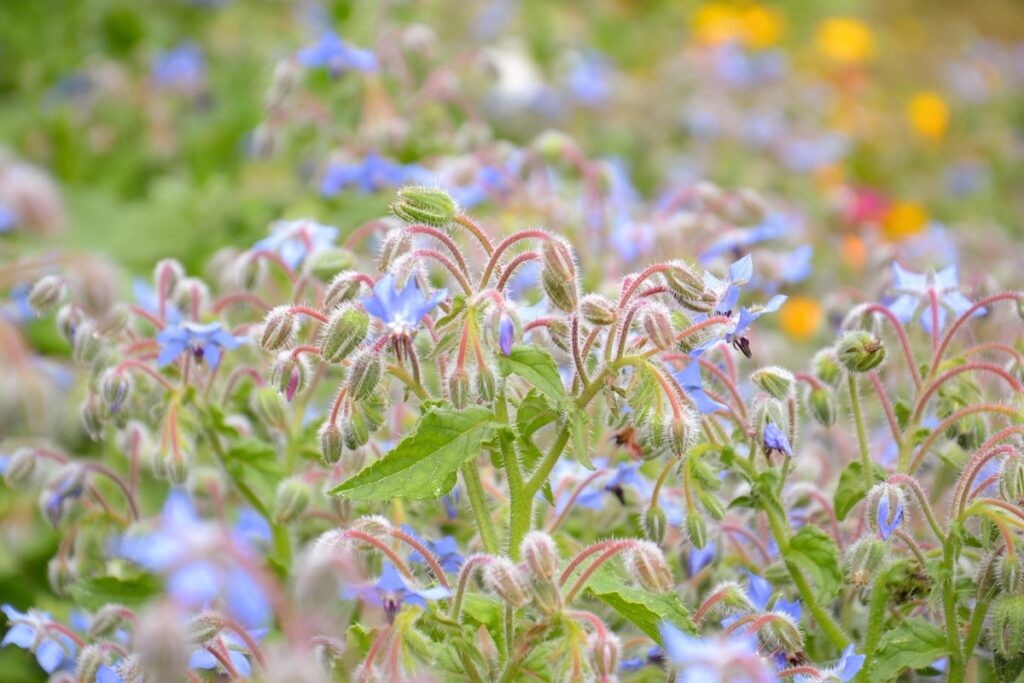
Conclusion
Growing Borage from seed is relatively easy and can be done indoors or outdoors. Borage seeds germinate best when direct sown into the ground or pots filled with well-drained, sterile potting mix. Borage plants will flower best in full sun and produce an abundance of blue flowers from late spring through early autumn. Borage can tolerate poor soils and dry conditions, making it ideal for those just starting with gardening. With some care and attention, you can have fresh Borage leaves to add to salads or use as a garnish in no time.
- How to Grow Tomatoes Organically at Home: A Comprehensive Guide
- Organic Gardening on a Budget: Low-Cost Methods and Materials
- Gongura Seed Germination and Planting Methods
- Cabbage Seed Germination and Selection
- Broccoli Seed Germination and Selection
- Asparagus Seed Germination and Variety Selection
- Seasonal Flower Gardening: Best Practices for Spring, Summer, Fall, and Winter
- How to Grow Hibiscus from Flower
- Plantation Ideas for Home Decoration: A Beginners Guide
- Flower Garden Designs and Layouts for Beginners
- Planting and Spacing Techniques in Papaya: A Beginner’s Guide
- Growing Gold: Essential Techniques for Planting Pineapples
- How to Make Kalanchoe Plant Bushy: Home Remedies and Solutions
- 11 Reasons Why Your Gardenia is Not Blooming: Home Remedies and Solutions
- Eco Elegance: The Guide to Designing a Drought-Tolerant Landscape
- Gardening on a Slope: Strategies for Hillside Landscaping
- Nourish and Flourish: Top Organic Mulches for Thriving House Plants
- Everything You Want to Know about Indian Mogra Flower: Discover Uses and Growing
- Green Thumb Success: Expert Tips for Cultivating Greenhouse Pumpkins All Year Round
- Maximize Growth & Flavor: The Ultimate Guide to Companion Planting in Herb Gardens
- How to Control Rhododendron Problems Naturally: Home Remedies and Organic Ways to Fix Them
- Natural Magic: The Remarkable Benefits of Cinnamon for Plants
- Best Steps to Revive Dying Tulip with Natural and Organic Treatment
- 10 Reasons Why Your Angel Trumpet is Not Blooming: Remedies and Treatment
- How to Fix Periwinkle Leaf and Flower-Related Problems: Natural Remedies and Solutions
- How to Fix Zinnias Leaf and Flower Problems: Discover Natural and Home Remedies
- Organic Steps to Induce Lemon Tree Flowers: A Comprehensive Guide
- Bloom Booster: Crafting the Perfect Homemade Bougainvillea Fertilizer
- Optimizing Growth: A Guide to Applying NPK Fertilizer for Potted Plants
- 10 Best Homemade Fertilizers for Rubber Plant: DIY Recipes and Application Method
- How to Boost Female Pumpkin Flowers: Effective Steps for More Flowers and High Yields
- Transform Your Indoor Garden: Top Benefits of Pink Salt for Houseplants
- 10 Best Homemade Fertilizers for Peacock Plants (Calathea): Easy DIY Guide
- Unlock Blooms: 9 Reasons Why Your Potted Chrysanthemum is Not Blooming
- 8 Reasons Why Your Potted Hibiscus is Not Blooming: Fix it with Simple Solutions
- Unlock Blooms: 9 Key Reasons Your Potted Frangipani Won’t Flower